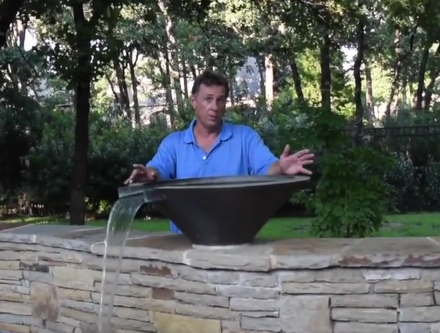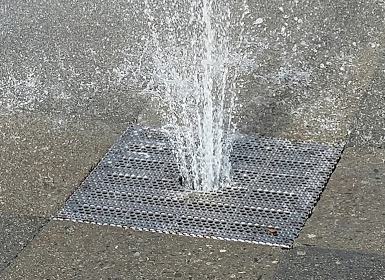ARTICLES
Advance Search
Aquatic Health
Aquatic Health, Fitness & Safety
Around the Internet
Aquatic Culture
Aquatic Technology
Artful Endeavors
Celebrity Corner
Life Aquatic
Must-See Watershapes
People with Cameras
Watershapes in the Headlines
Art/Architectural History
Book & Media Reviews
Commentaries, Interviews & Profiles
Concrete Science
Environment
Fountains
Geotechnical
Join the Dialogue
Landscape, Plants, Hardscape & Decks
Lighter Side
Ripples
Test Your Knowledge
The Aquatic Quiz
Other Waterfeatures (from birdbaths to lakes)
Outdoor Living, Fire Features, Amenities & Lighting
Plants
Ponds, Streams & Waterfalls
Pools & Spas
Professional Watershaping
Structures (Editor's Notes)
Travelogues & History
Water Chemistry
WaterShapes TV
WaterShapes World Blog
Web Links
Around the Internet
Aquatic Culture
Aquatic Technology
Artful Endeavors
Celebrity Corner
Life Aquatic
Must-See Watershapes
People with Cameras
Watershapes in the Headlines
It definitely helps to have a good reputation within the local design community. In this case, an architect I've known for years and have worked with on numerous occasions - someone with whom I've gotten so familiar with on the job site that we've become good friends - called me in to meet clients who needed help beyond the work he was doing on their house. He thought we'd be a good fit, and he was right: From our first meeting, the clients and I
Water bowls emerged not long ago as a key element in the Watershaping Industry's ongoing campaign to bring dimension, sound and vitality to residential backyards and commercial settings. They go a long way toward masking traffic noise, which is cool, but even in a space that's perfectly quiet, they offer up soothing sounds while bringing a sense of variety and visual stimulation to projects of just about any size or extent. As with the many
'As much as I love cold weather,' wrote Stephanie Rose in opening her Natural Companions column in April 2007, 'I have to concede that we experienced way too much of a good thing this past winter. Long periods of extremely cold weather are the norm in many other parts of the country, and plants survive. Here, however, our local plants may be accustomed to surviving the isolated sub-freezing night, but sustained, frosty temperatures
It was entirely coincidental, but the last edition of the WaterShapes digital newsletter included two of the most popular of all articles ever to appear on our Web site: Tommy T. Cook's "Casting Nature," which originally appeared in the printed magazine in November 2010; and Scott Cohen's "Beware of Exploding Lava Rocks," which was published exclusively through the newsletter on March 16, 2011. It's easy to recall how popular
Three words come to mind when I consider what's been happening with the Main Fountain Garden at Longwood Gardens for the last two-and-a-half years: ambitious, audacious and amazing. The people behind the project, from Longwood's management team to all of the outside players who signed on to get the work done, were supremely ambitious in deciding to reconstruct a historic national treasure - first commissioned in 1931 - and bring it abruptly up to 21st-century standards for performance, automation and serviceability. They were audacious to the extent that they decided that all of this should happen in plain view, with no visual obstructions to hide what was going on from the public at large - no construction pen, no yellow tape, no barriers of any kind to keep the observers who crowd the fountain's famed Conservatory Terrace from seeing exactly what was happening with their beloved water display. But so amazing! Although it had been in decline
Through all my years of writing these Travelogues, I have discussed less than a handful of traveler-accessible watershapes that didn't make the grade. It wasn't that they were horrible, but rather that they were a little bit "off" in my estimation. Just recently, however, I saw a fountain that should never have been built - it just wasn't worth the bother - and it's the first time in writing more than 100 of these essays that I'm actually advising
As purveyors of fountains and other forms of decorative or recreational water, watershapers are faced these days by an immediate challenge: What we do is generally classified as "unsustainable" by an environmentally conscious public because they erroneously assume poor performance when it comes to the way we approach water consumption, use of space and energy efficiency. On the surface, these are serious knocks on
I'd hazard the guess that most experienced pool designers and builders have run into this scenario: The clients want a pool, and they also want a spa - but not just any spa will do. Through the years, these clients have been in the attached spas of friends' inground concrete pools, but this is not what they want. That's because they've also experienced portable spas and prefer their performance: superior jet action, diverse seating arrays and options, more features and
All of a sudden three weeks ago, the Internet caught fire with what seems to be its annual round of stories about urine in swimming pools. As best I can tell, the story's current incarnation began with a March 1 report on the Web site of National Public Radio about research conducted by a group of Canadian chemists: These folks figured out that they could





















The Currency of Beauty